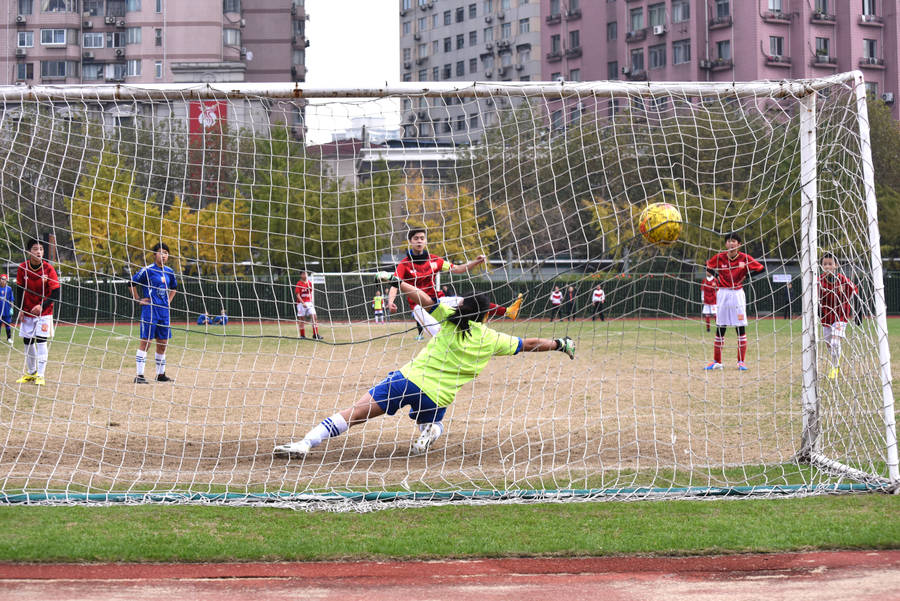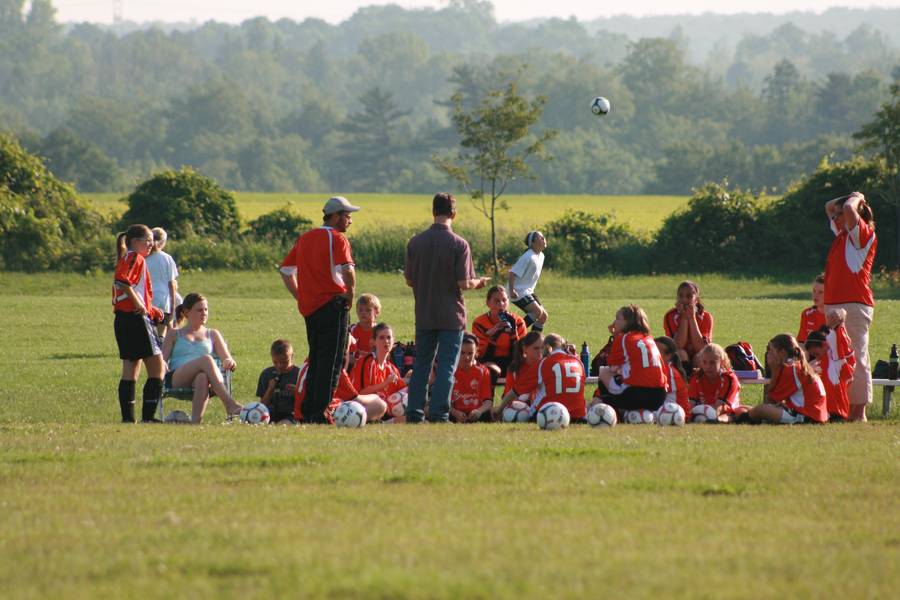5 a side football, a fast-paced variant of traditional football, is renowned for its emphasis on skill, agility, and quick thinking.
With fewer players on the pitch, the importance of strategic formation becomes magnified.
Each player's role is more fluid, and frequent role changes are a common feature during the match.
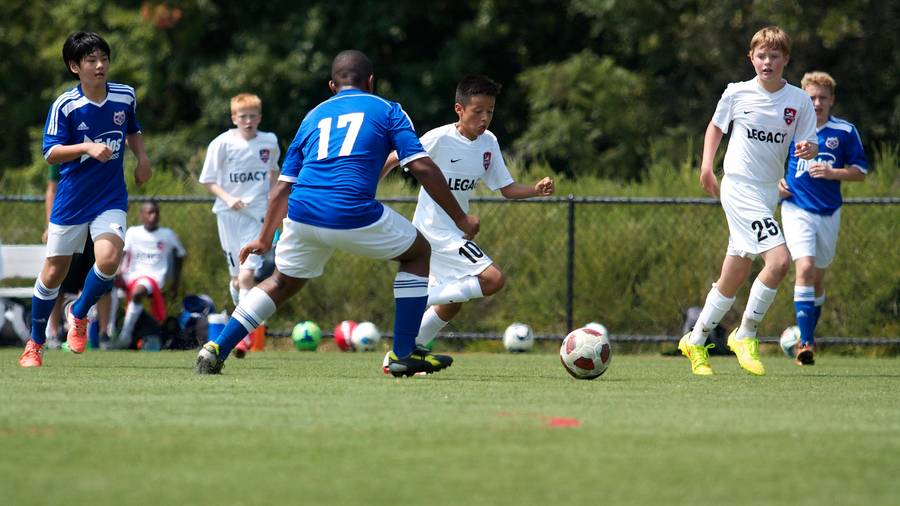
The formations in 5 a side football are not merely about player positioning but also about adapting to the dynamic nature of the game, ensuring both defensive solidity and offensive opportunities.
At the heart of a successful 5 a side team lies a well-structured formation that maximises space utilisation and player strengths.
A popular choice is the 1-2-1 formation, balancing defence and attack by assigning clear responsibilities to each player.
While one player anchors the defence, two take charge of the midfield, and one remains dedicated to striking.
This design allows teams to defend in depth while also being able to transition into attack swiftly.
Another effective strategy, the diamond formation, concentrates on central control, with a player at every side of the diamond to cover key areas of the pitch.
The flexibility of tactics in 5 a side football invites teams to be creative and play to their unique strengths.
As important as it is to have a strong foundational formation, it is equally crucial for teams to remain adaptable, responding to the ebb and flow of the game.
Whether focusing on a defensive setup or embracing a more attacking approach, the formations chosen by a team can often decide the outcome of a match, highlighting the tactical nous required to excel at this condensed version of the beautiful game.
Understanding 5-a-Side Football
5-a-side football is a variation of traditional football tailored for smaller teams and pitches.
The essence of this game is utilising space efficiently and mastering close ball control.
Tactics are paramount, often differing significantly from those used in 11-a-side matches.
The typical pitch is smaller in 5-a-side, which impacts how players manoeuvre and possess the ball.
The emphasis is on quick passing and spatial awareness, allowing teams to navigate the compact area effectively.
As there are fewer players, each individual's skills are more influential in the game's flow.
Football formations in 5-a-side are critical as they define a team's approach to both offence and defence. A variety of formations can be adopted, each with its strategic advantages.
Here are common positions and their roles:
- Goalkeeper: Protects the goal, commands the defence.
- Defender: Shields the goalkeeper, starts attacks.
- Midfielder: Links defence with offence, dictates play.
- Striker: Main goal-scoring threat.
Formations often take shape as variations of 1-2-1 or 2-2, balancing defensive solidarity with attacking options. With limited space and the fast pace of play, being adept at multiple positions is valuable.
Essential 5-a-Side Formations
In 5-a-side football, the formation a team adopts can significantly impact their gameplay and strategy. Each formation has its own strengths and weaknesses, designed to maximise team efficiency and cover the pitch effectively.
The Diamond Formation
The Diamond Formation is a balanced structure that facilitates both attack and defence.
It comprises a single goalkeeper, two defenders/midfielders on the flanks, one attacking midfielder, and a striker.
This formation allows fluid passing angles and provides strong defensive cover while still posing an attacking threat.
Strengths:
- Balanced defence and attack
- Good for maintaining possession
Weaknesses:
- Requires players to be skilled in multiple positions
- May lack width if players do not spread out effectively
The Square Formation
The Square Formation, also known as 2-2, positions two players in defence and two in attack.
This flat formation gives teams a straightforward defensive solidity and attacking options, but it relies heavily on player stamina and the ability to quickly transition between roles.
Strengths:
- Simple to organise
- Strong defensive platform
Weaknesses:
- Can be outmanoeuvred by more dynamic formations
- Less midfield control
The Pyramid Formation
Using The Pyramid Formation, a team places a strong emphasis on defence with one forward, one midfielder, and two defenders, including the goalkeeper.
The midfielder is key, supporting the striker and dropping back to help on defence.
Strengths:
- Defensive security
- Clear roles for each player
Weaknesses:
- Reduced attacking presence
- High demand on the midfielder's physical and tactical abilities
The Box Formation
Lastly, The Box Formation offers a solid and versatile approach with two players operating as both attackers and defenders.
They form a box shape that can shift and rotate fluidly as the game progresses, adapting to offensive and defensive phases naturally.
Strengths:
- Flexibility and adaptability
- Good coverage of the pitch
Positional Play and Roles
In five-a-side football, each position plays a critical role in both a team's defensive and offensive gameplay. Proper understanding and execution of these roles can shift the balance of play and leverage strategic advantages.
Goalkeeper Responsibilities
The goalkeeper is the anchor of the defence, tasked with preventing goals and initiating counter-attacks.
In addition to shot-stopping, they often play a key role in possession, distributing the ball accurately to set the team's pace.
Defensive Strategies
A sound defensive strategy involves more than just the goalkeeper.
Defenders must communicate effectively, ensuring they maintain shape to minimise space for opponents.
They should be adept at interpreting the game, knowing when to hold the line or push forward.
Midfield Control
Midfielders act as the engine room, essential in transitioning from defence to attack.
They should excel in retaining and recycling possession, offering support to both the defence and attackers, and adapting quickly to the ebb and flow of the game.
Attacking Dynamics
The attacker in five-a-side often has more space to exploit due to fewer players on the pitch.
Utilising rapid changes of pace and direction can break through defences.
An effective attacking formation hinges on constant movement and intelligent use of space.
The Pivot Role
Referred to as the pivot, this player—often equated with a striker—is vital in linking play.
Their role involves holding up the play, creating opportunities for teammates, and often being the focal point of attacking plays.
Their positional sense allows them to draw defenders and open up channels for midfielders to exploit.
Tactical Considerations
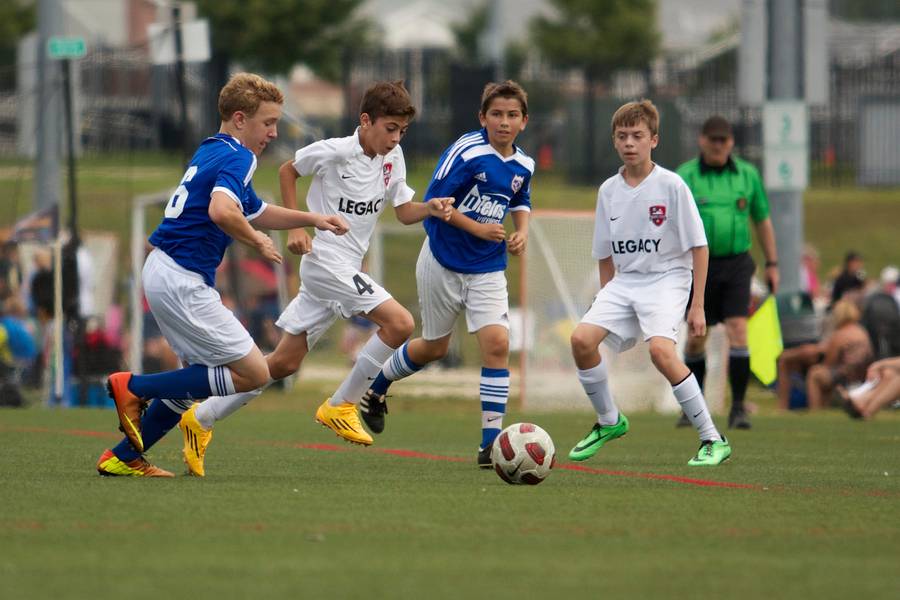
Tactical prowess in 5-a-side football is paramount for success. From choosing the best formation to execute strategies effectively, teams need to consider various factors to maintain dominance on the pitch.
Defensive Tactics
Defensive solidity depends on the meticulous positioning and responsiveness of players.
A popular approach includes one defender at the back at all times to thwart opposition attacks.
Adopting a flexible formation helps in maintaining defensive pressure while allowing slight adjustments as per the game's flow.
Attacking Strategies
In attacking, the focus is on quick, sharp passing and utilising the limited space efficiently.
Teams should aim to keep one player forward in assault mode to exploit any gaps in the opposition's defence.
Effective attacking strategies focus on creating and maximising scoring opportunities.
Balancing Attack and Defence
Maintaining a balance between attack and defence is critical.
Teams often employ a 2-1-1 system, positioning two players in attacking roles, one in midfield, and one in defence, providing a stable structure that can adapt to both defence and attack quickly.
Transition Play
Transition play denotes the swift switch from defence to attack and vice versa.
It relies on collective team movement and sharp decision-making.
Teams that master the art of transition can apply pressure efficiently and mount lethal counterattacks, often catching the opponent off guard.
Developing Team Skills
In 5-a-side football, the confined space of the pitch demands exceptional team skills.
Communication and Coordination
Teams that excel in 5-a-side football possess players who understand the importance of clear communication and coordination.
They constantly exchange information about their positions, opponents' movements, and game tactics.
Effective communication helps maintain a strong defensive structure and enables quick transitions into attack.
It is crucial for players to voice their intentions and for teammates to respond accordingly, to maintain the fluidity of the game.
Flexibility and Adaptability
In a fast-paced game like 5-a-side, players must exhibit flexibility and adaptability.
They should be comfortable in multiple positions and ready to switch roles at a moment's notice.
This adaptability allows a team to exploit weaknesses in the opposition's defence and readjust their tactics during the game.
The ability to pivot between roles comes from training, experience, and a deep understanding of the game.
Fitness and Stamina
The intensity of 5-a-side football means that fitness and stamina are non-negotiable attributes for any team wishing to compete successfully.
Matches require players to cover ground quickly and often, necessitating a high level of endurance.
Rigorous training focused on cardiovascular health and muscle endurance enables players to maintain a high work rate throughout the game, ensuring they can keep up with the demands of constant offensive and defensive transitions.
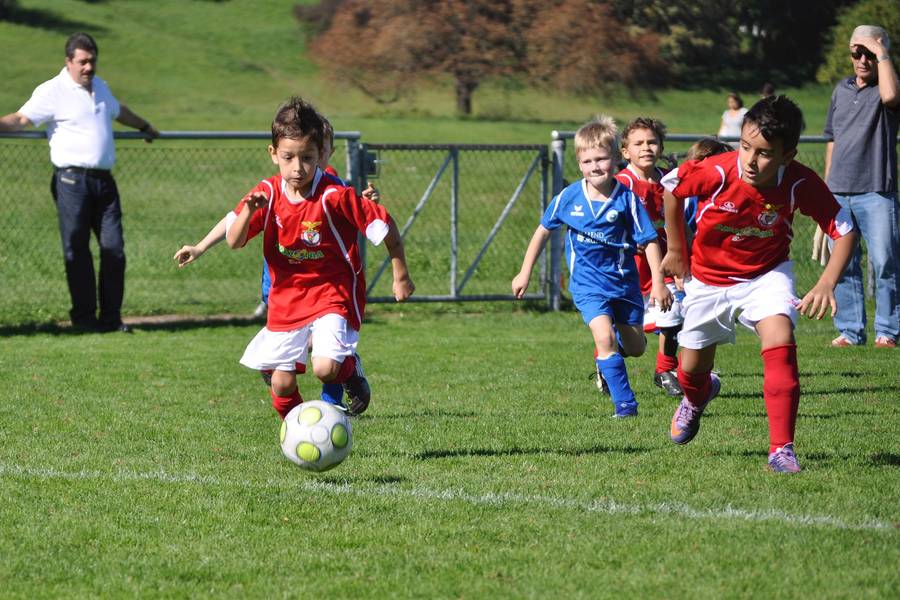
Mastering Set Plays and Formations
Efficient mastery of set plays and formations in 5-a-side football is pivotal for gaining advantage during a match, with success heavily reliant on meticulous practice and strategic organisation.
Defending Set Plays
In defending set plays, organisation is key.
Each player should have a clear role, and defensive formations are often designed to apply pressure without compromising position.
Typical setups like the 1-2-1 formation facilitate solid defensive coverage by forming a diamond shape, balancing the need to pressure the ball while ensuring no player is left unmarked.
Teams who excel at defending set plays often rehearse scenario-based drills, ensuring that everyone knows their responsibilities during corner kicks, free kicks, and other set-piece situations.
Attacking Set Plays
When focusing on attacking set plays, creative formations and rehearsed manoeuvres can break through organised defences.
A well-practised 1-1-2 formation, known as the 'Y' formation, emphasises aggressive forward pressure and can be beneficial in outnumbering defenders.
It is essential that players understand their roles in various attacking scenarios, which permits fluid transitions and can capitalise on any disarray within the opposition's defensive setup.
Coordinated runs and passes, perfected through repeated drills, often yield the best chances to score during set plays.
Managing Space and Movement
In 5-a-side football, effective management of space and movement is vital for creating and exploiting opportunities. Teams need to utilise width and depth while maintaining a fluid attacking position to traverse the pitch effectively.
Exploiting Width and Depth
Teams should aim to stretch the play across the full width of the pitch.
This often involves using the players on the flank to create both vertical and horizontal stretching of the opposition's defence.
By moving the ball quickly to the sides, space can be opened up in the middle for teammates to exploit.
For instance, the Box Formation (1-2-2) encourages players to spread out, providing the necessary width and depth to manoeuvre around defensive setups.
Creating Space for Teammates
Creating space is more than individual brilliance; it's about intelligent positioning and movement.
Players should always be aware of their surroundings to create space for others.
This can be achieved by simple but sharp movements such as a quick drop of the shoulder or a darting run, drawing defenders away and opening up pass-through routes.
Ensuring that at least one player is always in an attacking position keeps the opposition on their back foot.
Movement Off the Ball
Off-the-ball movement is as crucial as on-ball skills.
Players should remain in constant motion, using quick and brief runs to unsettle the opposition.
This not only applies to the attacking players but also defenders who can surge forward to lend support when safe to do so.
However, they must be cautious; as noted on 5-a-side.com, there is a danger of leaving the team exposed at the back if defenders join the attack without cover from teammates willing to track back defensively.
Teaching Game Intelligence
In 5-a-side football, game intelligence is paramount. Coaches and players must focus on predicting the opposition's strategy while understanding their own formation's strengths and weaknesses.
Anticipating Opposition Moves
Players must develop the ability to anticipate the opposition's next move.
This foresight isn't just about being reactive; it's about being one step ahead.
They should look for patterns and predictable behaviours in the opposition's play.
For example, if an opponent frequently cuts in when approaching the goal, players can position themselves to intercept or shepherd them into less threatening areas.
Understanding Formational Strengths and Weaknesses
Each formation in 5-a-side football has its unique strengths and weaknesses.
An understanding of these allows teams to exploit their own advantages while minimising risks.
Take the Box Formation (1-2-2), for instance; its strength lies in providing width and depth, but it may leave gaps that quick counter-attacking teams could exploit.
Intelligent players will understand how to rotate and cover these spaces effectively.
Physical Conditioning for 5-a-Side Football
Physical conditioning is pivotal for players in 5-a-side football. Due to the fast-paced nature of the game, players require substantial stamina and fitness to perform effectively throughout the match.
Stamina is essential as players need to sustain high energy levels to cover the pitch quickly and regularly.
Interval training—short bursts of high-intensity activity followed by a brief recovery—is a practical method to enhance endurance. A recommended routine could be:
- 60 seconds of sprinting
- 30 seconds of walking
- Repeat for 15–20 minutes
Strength is another key aspect; it enables players to hold their ground and maintain ball control against opponents.
Bodyweight exercises, such as push-ups and squats, effectively build functional strength for the demands of the game:
| Exercise | Sets | Repetitions |
|---|---|---|
| Push-ups | 3 | 15 |
| Squats | 3 | 20 |
| Lunges | 3 | 10 each leg |
Flexibility also plays a crucial role in 5-a-side football, as it allows for more substantial movements and can help prevent injury.
Players should incorporate dynamic stretching into their warm-up routine and static stretching during cool-down.
In terms of diet, players should focus on nutrition that supports their training regimen. A balanced diet rich in proteins, carbohydrates, and hydration will fuel the body for both training and match days.
Player Mindset and Attitude
In the context of 5-a-side football, a player's mindset and attitude are pivotal for individual and team performance. They influence how pressure is managed and the level of support within the team.
Handling Pressure and Expectations
Players face the dual challenge of coping with internal expectations and external pressure.
Internal expectations are self-imposed goals, such as a commitment to never miss a training session or to improve one's passing accuracy.
External pressure might come from team members, coaches, or the competition itself.
Players need strategies to maintain focus and performance under these conditions.
For example, a defender in 5-a-side football may use deep breathing techniques to stay calm when constantly under attack, thereby maintaining a clear head for strategic decision-making.
Team Ethos and Support
Team ethos shapes the way individuals view their role within the squad.
A strong team ethos is characterised by mutual respect, shared objectives, and collective responsibility for success and failure.
Meanwhile, support refers to the encouragement and backup players provide each other, both on and off the pitch.
It is crucial for maintaining team morale and cohesion, especially in 5-a-side football where the fast-paced game intensely relies on player cooperation.
An example might be a team collectively analysing their defensive tactics to ensure every player feels integral to the team's success and understands their role in protecting the goal.
Advanced Tactics and Formations
In 5-a-side football, advanced tactics and formations are pivotal in devising a successful strategy. These setups dictate both defensive solidity and attacking prowess, with a premium placed on flexibility and inventiveness. The following subsections outline three sophisticated formations that prioritise balance, creativity, and variation.
The Y Formation
The Y formation is an aggressive configuration that maximises attacking options. It typically consists of one defender, one midfielder, and two forwards. The midfielder occupies a pivotal role in both defence and attack. The shape resembles a 'Y' with the single defender at the base and the attacking players forming the 'Y' prongs.
This formation allows for quick transitions and helps to exploit spaces in the opposition’s defence. For detailed insights, one may consider exploring 5-a-side formations and their tactics.
The 2-0-2 Formation
The 2-0-2 formation is a balanced but less conventional structure, where two defenders and two strikers team up without a dedicated midfielder. It encourages a defensive stronghold while still maintaining the potential for a strong counterattack.
Teams employing this formation need to ensure that players are adept at interchanging positions seamlessly to maintain structural integrity. It's a testament to a team's defensive coordination and attacking flexibility.
This particular setup can be seen as both a defensive and attacking formation, depending on the team’s movement and positioning. Read more about how to apply this formation in 5 A Side Formations: The Best Five A Side Football Tactics.
Custom Formations
Custom formations in 5-a-side football enable teams to exhibit their unique style of play, infusing creativity and variation into their game plan.
Such formations are tailored to the team's strengths and weaknesses, often incorporating elements of traditional setups with innovative twists. They range from highly defensive to boldly attacking, with the common goal of creating leverage against opposing teams.
Custom formations are an embodiment of a team's adaptability and can be instrumental in unexpected match situations. They are a reflection of the team’s tactical acumen and ability to think outside the conventional framework.
Formation variations can be researched through sources like Effective 5 A Side Football Formations.
Frequently Asked Questions
In the pacey world of 5-a-side football, tactics and formations are fundamental to a team's success. This section covers frequently asked questions to provide insight into effective strategies and roles.
What are the most effective formations in 5-a-side football?
The most effective formations in 5-a-side football are those that offer a balance between attack and defence. For example, the 1-2-1 ensures that both the defence and attack have support at all times. Another popular formation is 2-2, which is advantageous for its flexibility and equilibrium on the pitch.
How does player positioning influence a 5-a-side football match?
Player positioning in 5-a-side football directly affects the team's ability to control the game and respond to the opposition's tactics.
Strategic placement of players can help to exploit the opponent's weaknesses and strengthen a team's defensive and offensive proceedings.
What are the defensive strategies in a 5-a-side formation?
Defensive strategies in 5-a-side formations often revolve around compactness and transition. A dedicated player committed to defending can help prevent gaps and maintain the team's shape.
Teams must balance the urge to push forward with the necessity of safeguarding their goal.
How can one adapt formations in 5-a-side football based on the team's playing style?
Adapting formations in 5-a-side football depends on the team's strengths and the match context.
A team that excels in quick counter-attacks may opt for a more defensive setup, while a possession-oriented team might choose a formation that allows for constant support and options for the player on the ball.
What is the role of a goalkeeper in different 5-a-side football formations?
The goalkeeper's role in 5-a-side football extends beyond traditional shot-stopping. In various formations, the keeper often acts as a sweeper and an additional outfield player, contributing to the build-up play and sometimes even initiating attacks.
How do substitution strategies affect 5-a-side football formations?
Substitution strategies can have a significant impact on 5-a-side formations. Fresh legs are able to inject pace and dynamism into the game.
Tactical substitutions can be used to exploit tired opponents, shift the team's formation in response to the game's flow, or shore up defence during the closing stages of a match.







